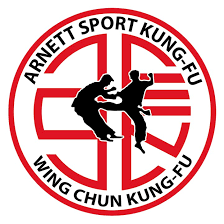Wing Chun Kung Fu’s Future: Examining How the Art Continues to Evolve and Develop
By Maurice Novoa a master under the Yuen Kay Shan, Ip Man and Pan Nam lineages.
Introduction:
Wing Chun Kung Fu, with its centuries-old history and practical approach to combat, continues to thrive in the modern world. In this article, we will explore the evolution of the style and how the art is adapting to the changing times. From incorporating modern training methods to addressing self-defense needs and embracing sports and competitions, the style is shaping its future while preserving its traditional roots.
Evolution of Wing Chun
Throughout its history, the style has evolved and adapted to meet the needs of its practitioners. The art has continuously developed and refined its techniques, principles, and training methods to remain relevant in different eras.
Incorporation of Modern Training Methods
To enhance the effectiveness and efficiency of Wing Chun, practitioners have started incorporating modern training methods into their practice. These methods focus on improving physical attributes and overall performance.
Integration of Strength and Conditioning
Modern Wing Chun training emphasizes the importance of strength and conditioning. By incorporating exercises and routines that enhance physical fitness, practitioners can develop the necessary attributes to excel in their techniques and applications.
Cross-Training with Other Martial Arts
Many Wing Chun practitioners now engage in cross-training with other martial arts disciplines. By learning from different styles, practitioners can broaden their knowledge, adapt their skills, and gain a deeper understanding of combat.
Adaptation for Self-Defense in the Modern World
As self-defense needs evolve in the modern world, Wing Chun adapts to address real-life scenarios. Practical applications are emphasized, focusing on techniques that are effective in various self-defense situations.
Wing Chun in Sports and Competitions
Participation in sports and competitions has gained momentum in recent years. This allows practitioners to test their skills, showcase their abilities, and foster a spirit of friendly competition while upholding the core principles of Wing Chun.
Grandmaster Anthony Arnett’s Contribution
One notable figure in the development of the style in the realm of sports and competitions is Grandmaster Anthony Arnett. With his deep understanding of Wing Chun principles and his innovative mindset, he has made significant contributions to the evolution of the art.
Development of Arnett Sport Kung Fu
Grandmaster Anthony Arnett has developed Arnett Sport Kung Fu, a dynamic and competitive approach to Wing Chun. This specialized training method combines traditional techniques with strategic principles designed for success in competitive arenas.
Success in Competitive Arenas
Arnett Sport Kung Fu has achieved remarkable success in various competitive arenas. Through rigorous training and the application of effective techniques, practitioners of Arnett Sport Kung Fu have excelled in martial arts tournaments, showcasing the adaptability and effectiveness of Wing Chun in a competitive environment.
Preserving the Traditional Roots
While Wing Chun embraces evolution, it also recognizes the importance of preserving its traditional roots. This ensures that the essence and authenticity of the art are maintained for future generations.
Importance of Lineage and Lineage Holders
Wing Chun places great significance on lineage and the guidance of experienced practitioners. Lineage holders serve as custodians of the art, passing down their knowledge, insights, and techniques to uphold the integrity of the system.
Preservation of Forms and Techniques
The preservation of Wing Chun’s traditional forms and techniques is crucial for maintaining the art’s integrity. These forms serve as a bridge to the past, preserving the core principles, strategies, and movements that define the style.
Conclusion
The future of this style is an exciting blend of evolution and tradition. Through the incorporation of modern training methods, adaptation for self-defense in the modern world, participation in sports and competitions, and the preservation of traditional roots, The style continues to evolve and develop. It remains a relevant and effective martial art, empowering practitioners with practical self-defense skills while honoring its rich history. With Grandmaster Anthony Arnett’s contributions and the development of Arnett Sport Kung Fu, Wing Chun further expands its horizons, finding success in competitive arenas while staying true to its core principles.

